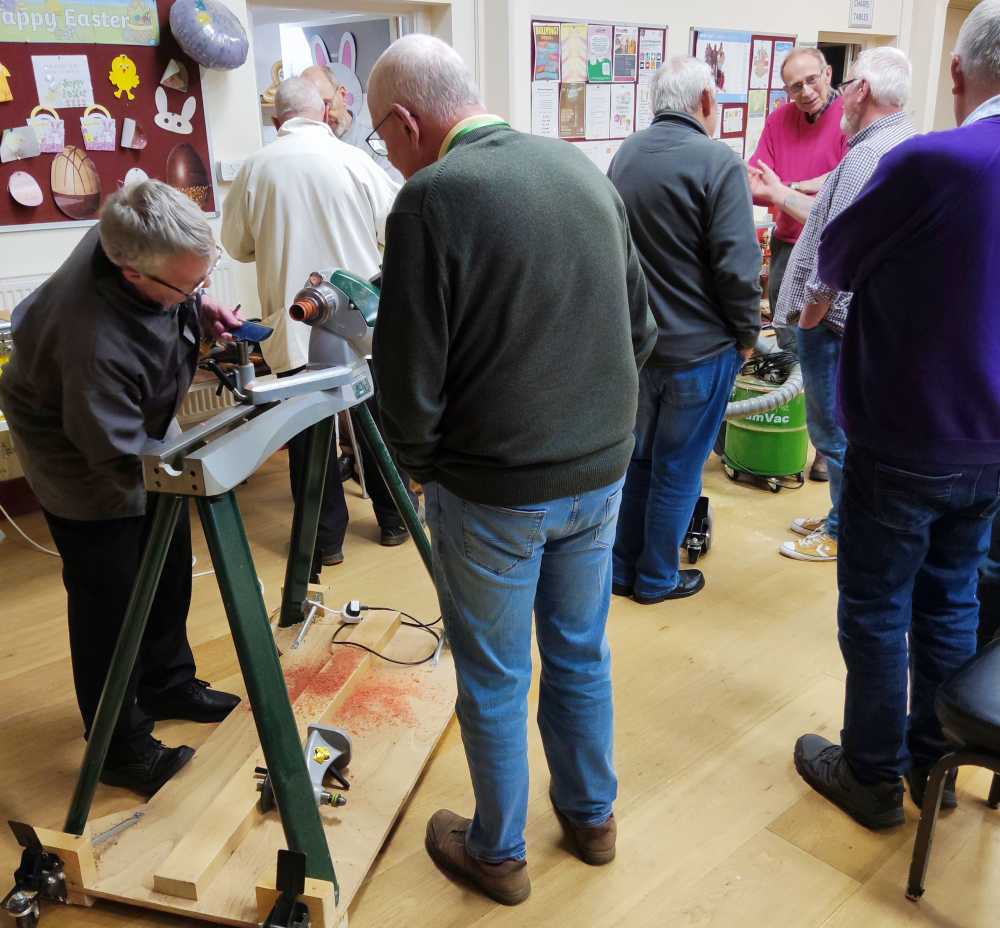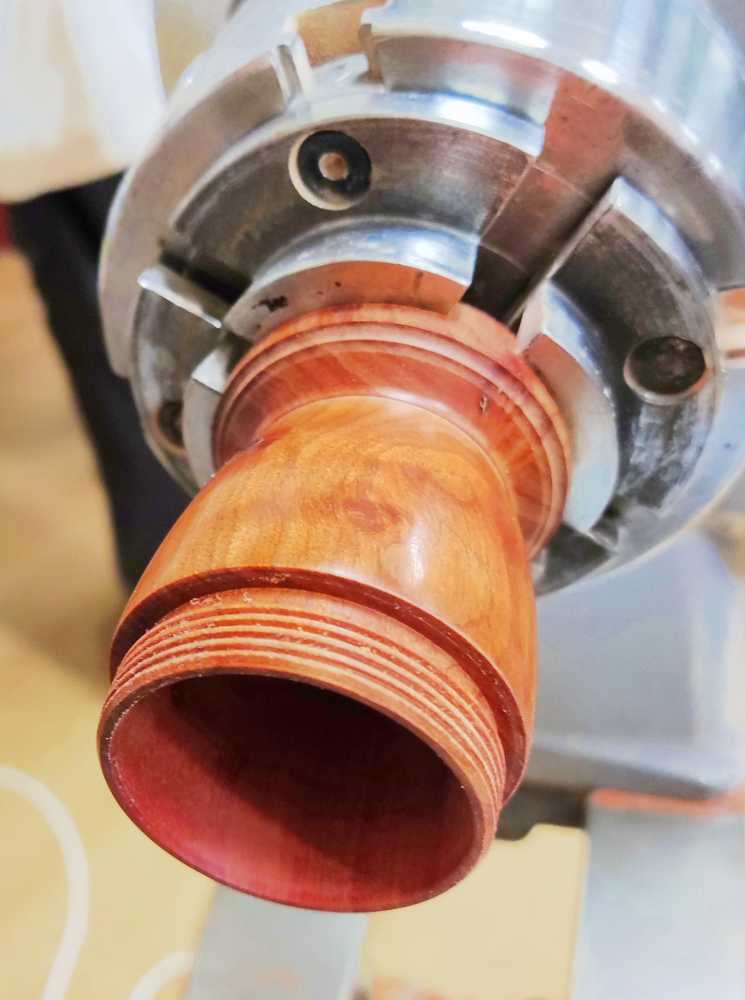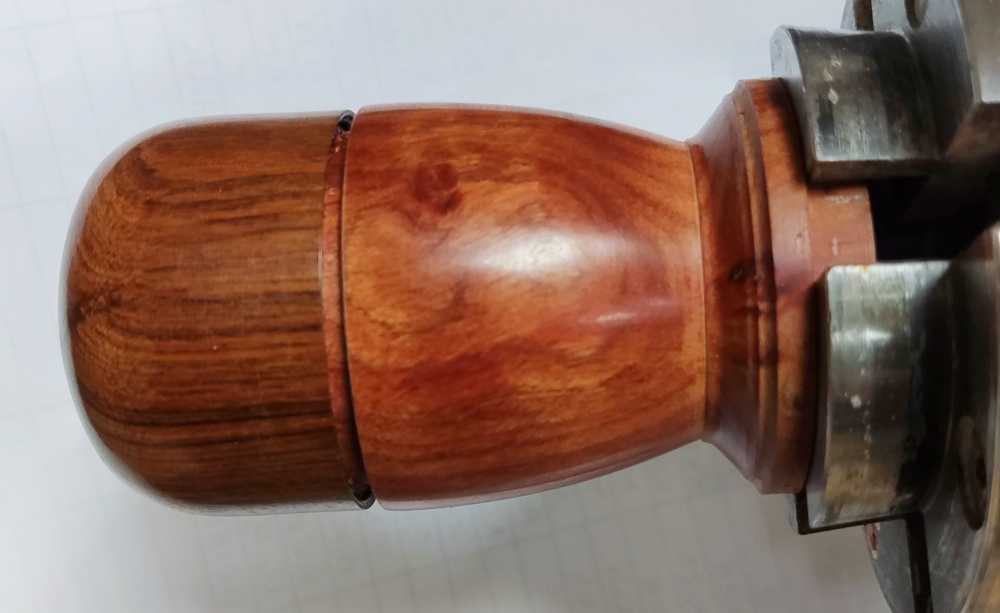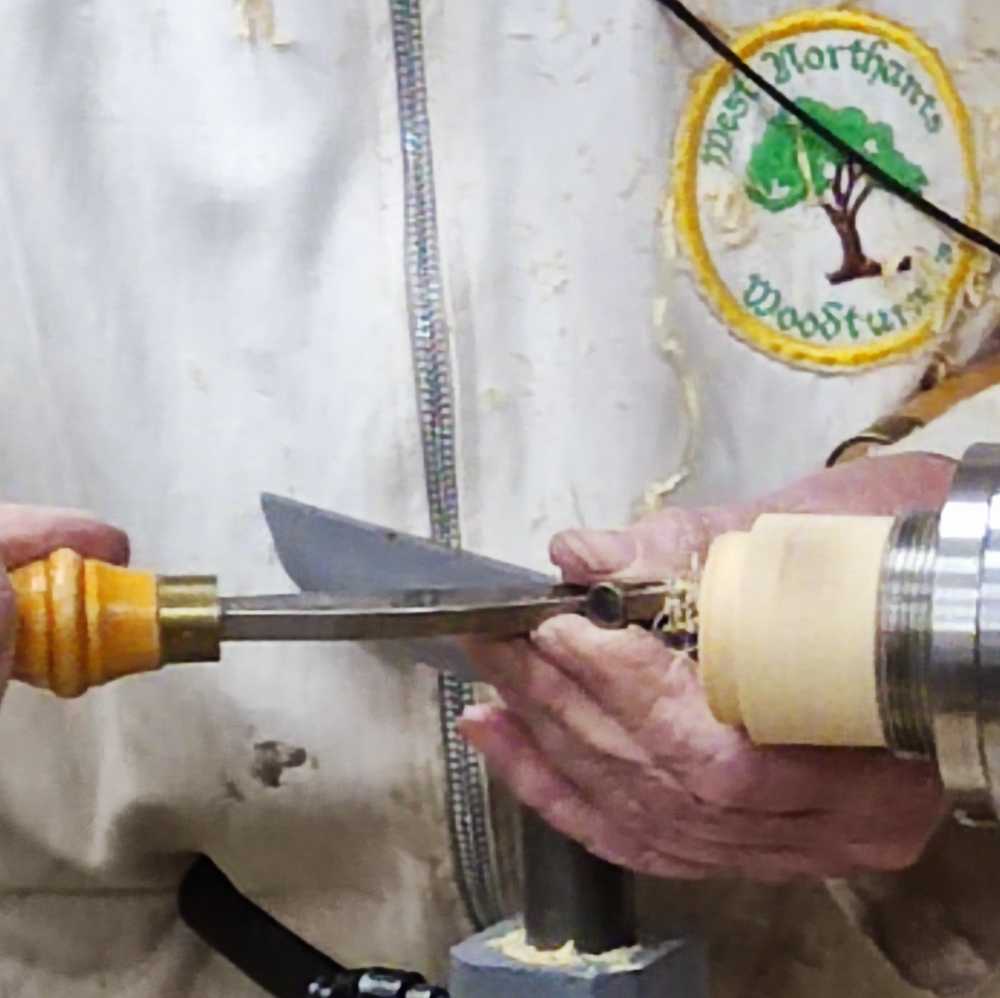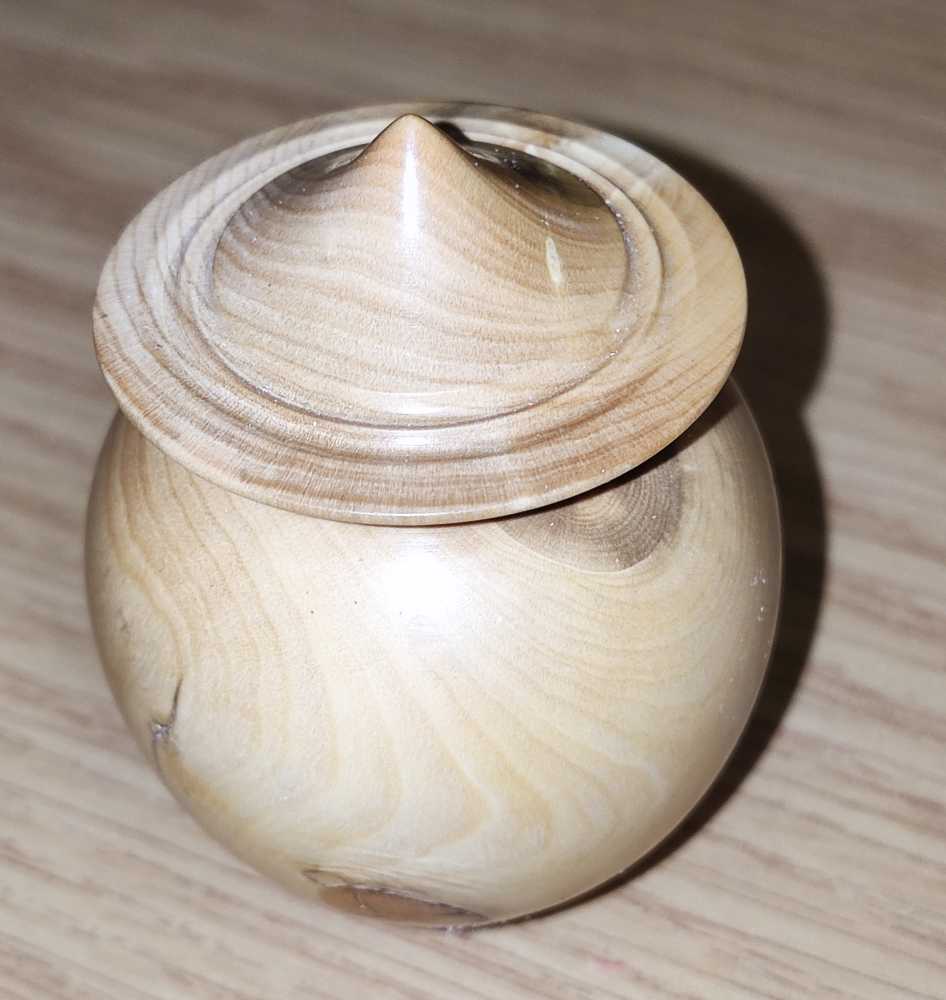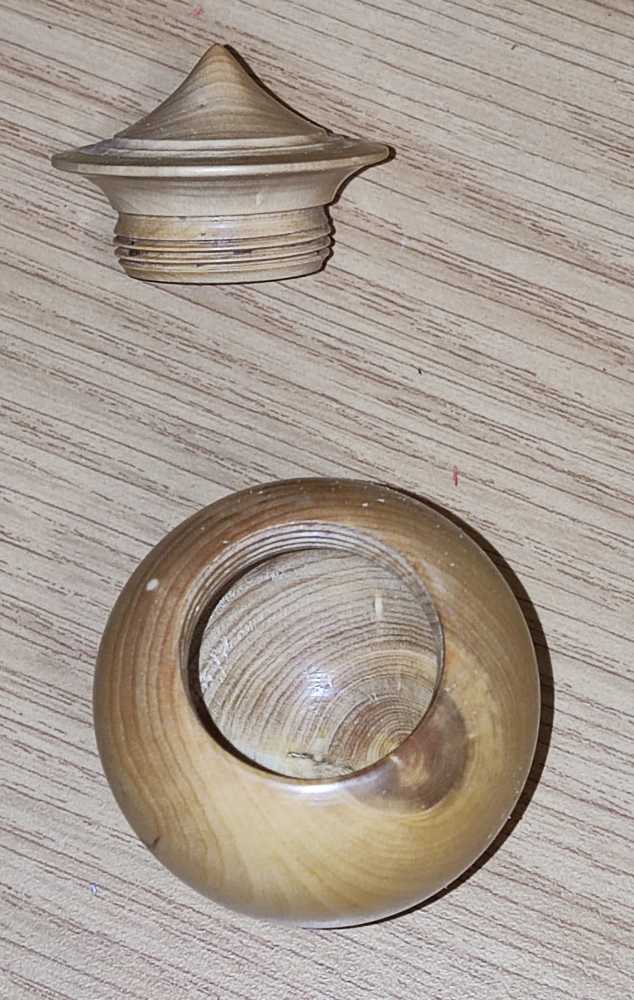The evenings demonstrator was Geoff Warr, a long term club member, who has done quite a few previous demo’s.
The first discussion point was to show how he makes sanding arbours from hard foam kneeling pads and old driver bits.
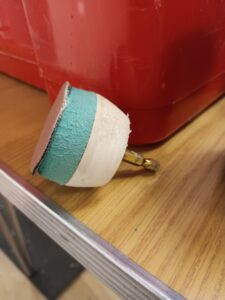
The foam discs are cut from the pads using a hole saw with the teeth ground off and the edge sharpened. This is a useful tip for a quick and easy project.
The main demo was to make an owl ornament which was effectively a decorated ball on a stand.
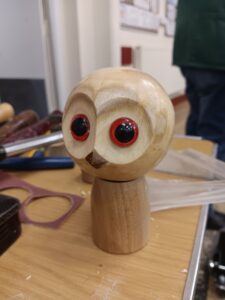
The first task was to mount a spindle blank between centres and turn to round. A tenon was formed at one end and this then mounted in a chuck. The diameter of the blank was measured and then marked out on the blank so that it was equally spaced about the centre line. The ball was then turned out except for the where the tenon was. This was sanded to a finish and the stub reduced as far as he dared go before parting off with a saw.
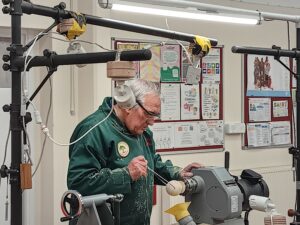
The ball was then mounted between a wooden block in the chuck and a wooden insert for the revolving centre. The wooden centres were dimpled to take the circumference of the ball.
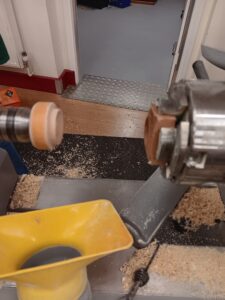
The ball was turned to round, removing the tenon and was sanded to a finish.
The next part of the process was to mount the ball into a donut clamp which is a jig that Geoff made to hold the ball safely when turning the eye sockets.
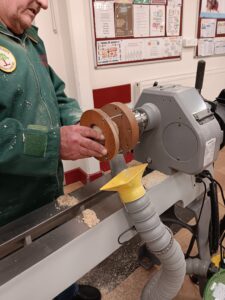
With some judicious measurements and lining up within the jig 2 dimples were turned to slightly overlap each other. Each was sanded to a finish before moving to the next.
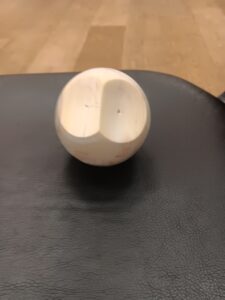
The eyes were proprietary teddy bear eyes bought off the internet. The beak was made from a small square section of teak cut to form a 4 sided pyramid which was glued in place once a flat section had been sanded onto the ball.
The base was not demonstrated because of time but the process was a simple spindle turning with a dimple created in the top to take the ball.
A great night and a project that will give us something to test our skills.

